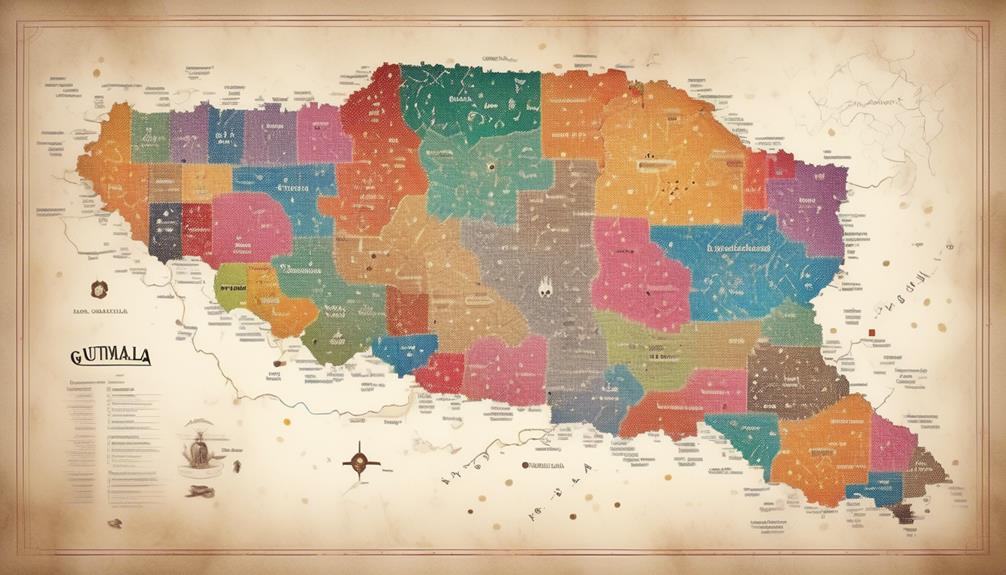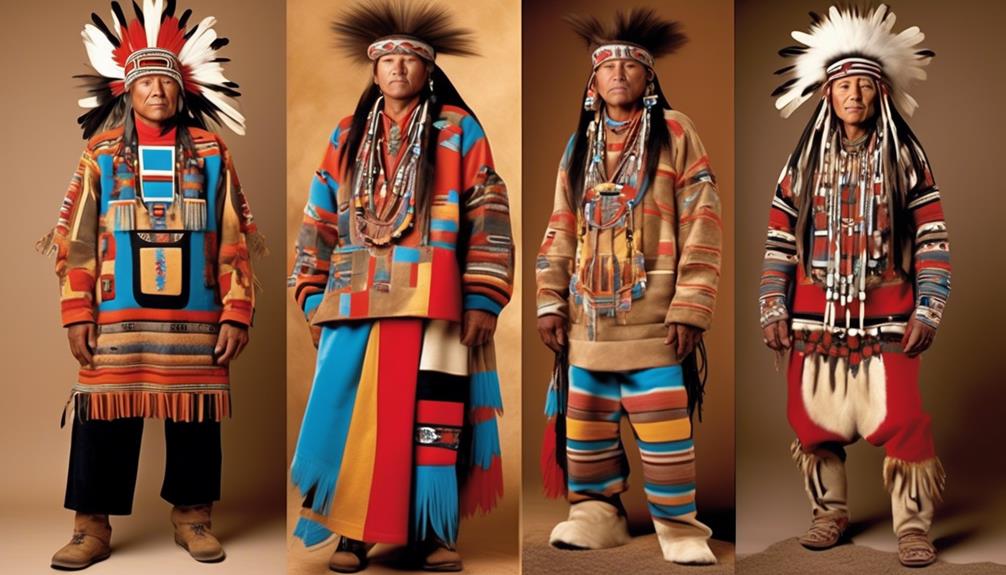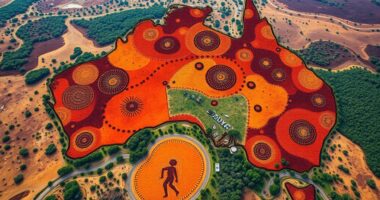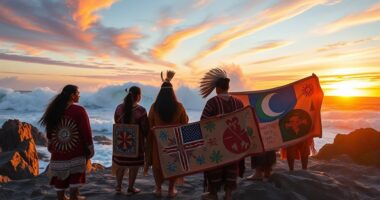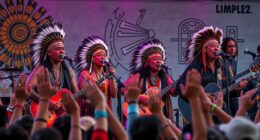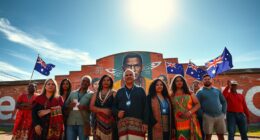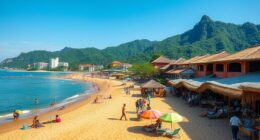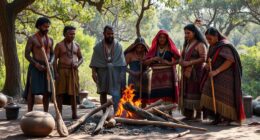Guatemala, with its rich cultural heritage, is home to more than 20 indigenous languages spoken by different ethnic groups. Yet, the linguistic diversity in Guatemala extends far beyond this number.
Understanding the complexity and significance of indigenous languages in the region is crucial for appreciating the depth of Guatemala's cultural tapestry.
Key Takeaways
- Guatemala has 23 officially recognized indigenous languages.
- Over 40% of the population in Guatemala speaks indigenous languages.
- Indigenous languages represent distinct cultural traditions and influence various aspects of Guatemalan society.
- Linguistic diversity in Guatemala is a reflection of its cultural richness and contributes to the preservation of cultural identities and traditions.
The Cultural Diversity of Guatemala
The cultural diversity of Guatemala is reflected in its rich tapestry of indigenous languages, traditions, and customs, contributing to the country's vibrant and multifaceted cultural landscape.
Guatemala is home to 23 officially recognized indigenous languages, each representing a distinct cultural tradition. The linguistic diversity is a testament to the country's historical and ongoing commitment to preserving its indigenous heritage. These languages are spoken by over 40% of the population, showcasing the significant role they play in shaping the social fabric of Guatemala.
The cultural traditions embedded within these languages serve as a cornerstone for various indigenous communities, fostering a sense of identity and belonging. Furthermore, these traditions are intricately woven into daily life, influencing art, music, cuisine, and religious practices.
As a result, Guatemala's linguistic diversity isn't only a reflection of its cultural richness but also a source of resilience and strength for its indigenous populations. Understanding and celebrating these cultural traditions is crucial for appreciating the depth and complexity of Guatemala's cultural landscape.
Indigenous Languages in Guatemala: A Historical Overview
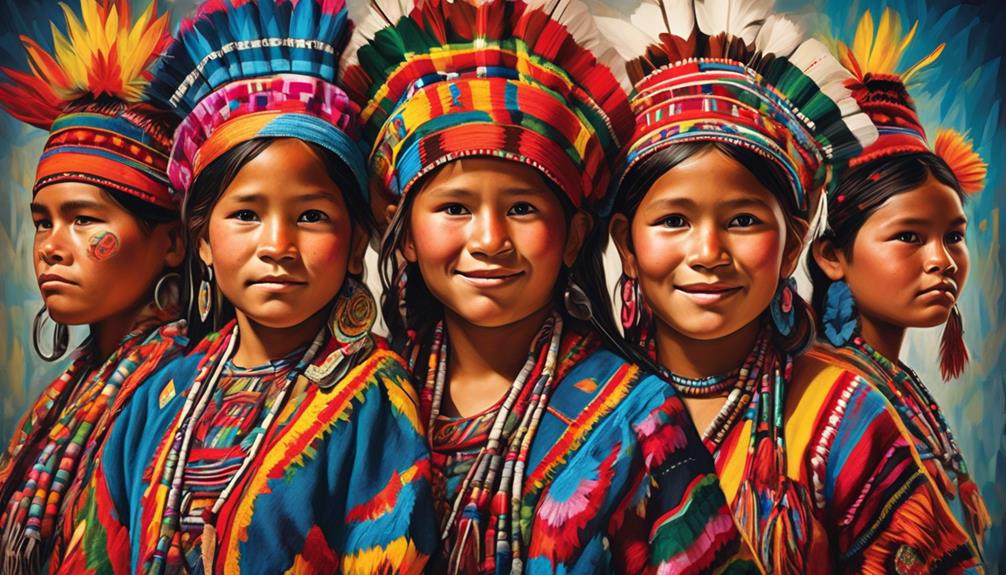
With a history deeply intertwined with the diverse linguistic heritage of its indigenous communities, Guatemala's indigenous languages have played a pivotal role in shaping the country's cultural identity. The historical significance of these languages is profound, reflecting the rich tapestry of Guatemala's past.
The linguistic evolution of indigenous languages in Guatemala can be traced back to pre-Columbian times, where the Mayan civilization's sophisticated writing system and literature flourished. However, the arrival of the Spanish conquistadors in the 16th century marked a significant turning point, leading to the imposition of Spanish as the dominant language and the suppression of indigenous languages.
This colonial legacy had a lasting impact, resulting in a complex linguistic landscape that continues to shape Guatemala's society today. Despite centuries of marginalization, indigenous languages have persevered, carrying the resilience and heritage of Guatemala's indigenous peoples.
The historical overview of Guatemala's indigenous languages underscores their enduring importance and the ongoing efforts to preserve and promote linguistic diversity in the country.
The Geographic Distribution of Indigenous Languages
Indigenous languages in Guatemala exhibit a diverse and intricate geographic distribution, reflecting the historical and cultural complexities of the country. The geographic diversity of indigenous languages in Guatemala is profound, with over 20 Mayan languages spoken across the region. This distribution is a testament to the rich tapestry of indigenous cultures and their deep-rooted connection to the land.
As such, the preservation and revitalization of these languages are crucial for maintaining the cultural heritage of Guatemala. Efforts in language revitalization are essential to ensure that these unique linguistic traditions aren't lost to the passage of time.
Emotional Response
- It's awe-inspiring to witness the resilience of indigenous languages amidst such geographic diversity.
- The intricate distribution of indigenous languages reflects the profound connection between language and culture.
- The ongoing efforts in language revitalization serve as a beacon of hope for preserving linguistic diversity.
Understanding the geographic distribution of indigenous languages is pivotal for appreciating the cultural significance and language revitalization efforts in Guatemala.
Preserving Indigenous Languages in Guatemala
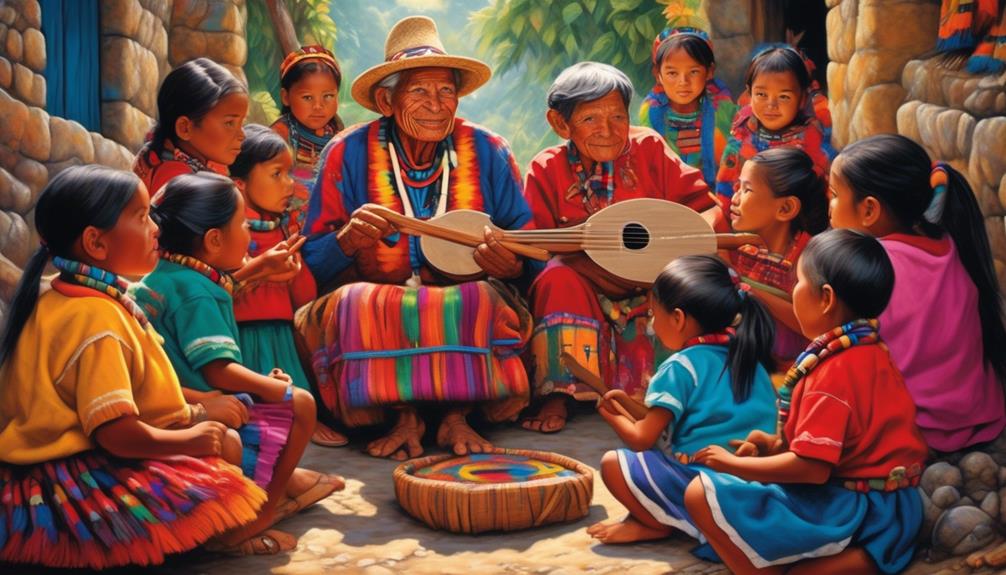
Reflecting on the profound geographic distribution of indigenous languages in Guatemala, it is imperative to examine the strategies for preserving these linguistic traditions. Language preservation is vital for maintaining cultural heritage and ensuring the transmission of invaluable knowledge from one generation to the next. In Guatemala, various initiatives and programs are in place to safeguard indigenous languages from the risk of extinction. These efforts encompass formal education, community-based language revitalization projects, and the documentation of oral traditions. Additionally, the recognition and promotion of indigenous languages in official settings further contribute to their preservation.
To provide a clearer understanding, the table below outlines some key strategies for preserving indigenous languages in Guatemala:
| Preservation Strategy | Description |
|---|---|
| Formal Education Programs | Integration of indigenous languages into the national education system. |
| Community-Based Initiatives | Collaborative efforts within indigenous communities to teach, document, and revitalize their languages. |
| Oral Tradition Documentation | Recording and archiving of oral histories, stories, and traditional knowledge in indigenous languages. |
| Recognition in Official Settings | Acknowledgment and use of indigenous languages in government, media, and public domains. |
| Cultural Exchange Programs | Facilitating intergenerational language transmission through cultural events and activities. |
These strategies play a crucial role in safeguarding the linguistic diversity and cultural richness of Guatemala.
The Importance of Indigenous Languages in Guatemalan Society
The presence of indigenous languages in Guatemalan society significantly shapes cultural identity and contributes to the country's linguistic diversity. Indigenous languages hold immense importance in preserving the rich cultural heritage of Guatemala. They serve as a vital link to the country's pre-Columbian past, offering insight into ancient traditions, belief systems, and societal structures. Furthermore, the significance of indigenous languages extends beyond cultural preservation, playing a crucial role in fostering a sense of belonging and community among indigenous peoples.
The following points highlight the emotional impact and importance of indigenous languages in Guatemalan society:
- Preservation of Cultural Identity: Indigenous languages are essential for preserving the unique cultural identities of various indigenous communities, serving as a vehicle for transmitting traditions, folklore, and collective memory.
- Empowerment and Pride: The use of indigenous languages instills a sense of empowerment and pride within indigenous communities, reinforcing their distinct cultural identities and strengthening social cohesion.
- Linguistic Diversity: Indigenous languages enrich Guatemala's linguistic landscape, contributing to the nation's linguistic diversity and serving as a testament to the country's multicultural heritage.
The importance of indigenous languages transcends mere communication, playing a fundamental role in shaping the cultural fabric of Guatemalan society.
Frequently Asked Questions
What Are the Main Challenges Faced by Indigenous Language Speakers in Guatemala Today?
We face significant challenges as indigenous language speakers in Guatemala today.
Education initiatives are crucial to preserving our languages, but limited funding and resources hinder their effectiveness. Many of our communities lack access to quality education in our native languages, leading to a decline in fluency and usage.
Additionally, discrimination and marginalization in broader society further exacerbate these difficulties. Addressing these challenges is essential to safeguarding our linguistic heritage and cultural identity.
Are There Any Specific Efforts Being Made to Revitalize and Promote Lesser-Known Indigenous Languages in Guatemala?
We are witnessing significant efforts geared towards the preservation, promotion, and revitalization of lesser-known indigenous languages in Guatemala.
Various organizations and government initiatives are actively working to support language documentation, education, and cultural revitalization programs.
These efforts aim to safeguard linguistic diversity and cultural heritage, contributing to the overall well-being of indigenous communities.
Such endeavors are crucial for the continued vitality of these languages and the empowerment of indigenous populations.
How Do Indigenous Languages in Guatemala Contribute to the Country's Overall Linguistic Diversity?
Indigenous languages in Guatemala are like a tapestry, weaving together a rich linguistic preservation and cultural heritage. With over 20 languages spoken, they significantly contribute to the country's overall linguistic diversity.
Their preservation is crucial, as they hold the key to understanding the historical and cultural roots of Guatemala. Efforts to revitalize and promote these lesser-known languages are vital for maintaining this invaluable aspect of the country's identity.
What Role Do Indigenous Languages Play in Traditional Guatemalan Cultural Practices and Ceremonies?
Cultural significance and language preservation are integral to traditional Guatemalan practices.
Indigenous languages play a vital role in preserving the rich cultural heritage of Guatemala and are central to traditional ceremonies and customs. They serve as a means of passing down ancestral knowledge and maintaining cultural identity.
The continued use of indigenous languages in these practices is essential for safeguarding Guatemala's diverse cultural traditions and ensuring their continuity for future generations.
How Are Indigenous Language Speakers in Guatemala Represented in Government and Public Institutions?
We often see government representation as a pillar of equity and justice, yet linguistic discrimination persists. Indigenous language speakers in Guatemala face systemic barriers in accessing public institutions.
The need for inclusive policies and language support is evident. Data reveals underrepresentation and limited linguistic services. Analyzing these disparities is crucial for informed decision-making.
Conclusion
In conclusion, the richness of Guatemala's cultural diversity is reflected in the multitude of indigenous languages spoken throughout the country.
The preservation of these languages is crucial for maintaining the unique identity and heritage of Guatemala.
As the sun sets over the vibrant landscapes of this Central American nation, the echoes of ancient indigenous languages continue to resonate, weaving a tapestry of tradition and history that's inseparable from the soul of Guatemala.
